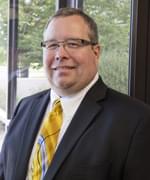Combining Particle and Microbial Sensors to Fully Meet Regulatory Requirements
Monitoring of nonviable and viable particles in a cleanroom is critical to meet regulatory requirements. An environmental monitoring system effectively collects, manages, and reports on data from both types of sensors.
Total particle contamination is a mixture of nonviable and viable particles. Historically, nonviable particles are monitored continuously while viable particles have been monitored on a less frequent basis. In modern aseptic manufacturing, both types should be monitored continuously to obtain an accurate indication of the cleanroom’s condition.
An ideal monitoring program provides the sampling data required and ensures data integrity through the use of an automated system to track any changes. The system used to track and record data must meet the requirements of 21 CFR Part 11 and should be incorporated into an automated Environmental Monitoring System.
Download this webinar to learn how to meet regulatory contamination monitoring requirements.
What You Will Learn:
- Key regulations related to Environmental Monitoring Systems.
- How to incorporate particle and microbial sensors into an Environmental Monitoring System.
- The types of data and reports that should be expected from an Environmental Monitoring System.

